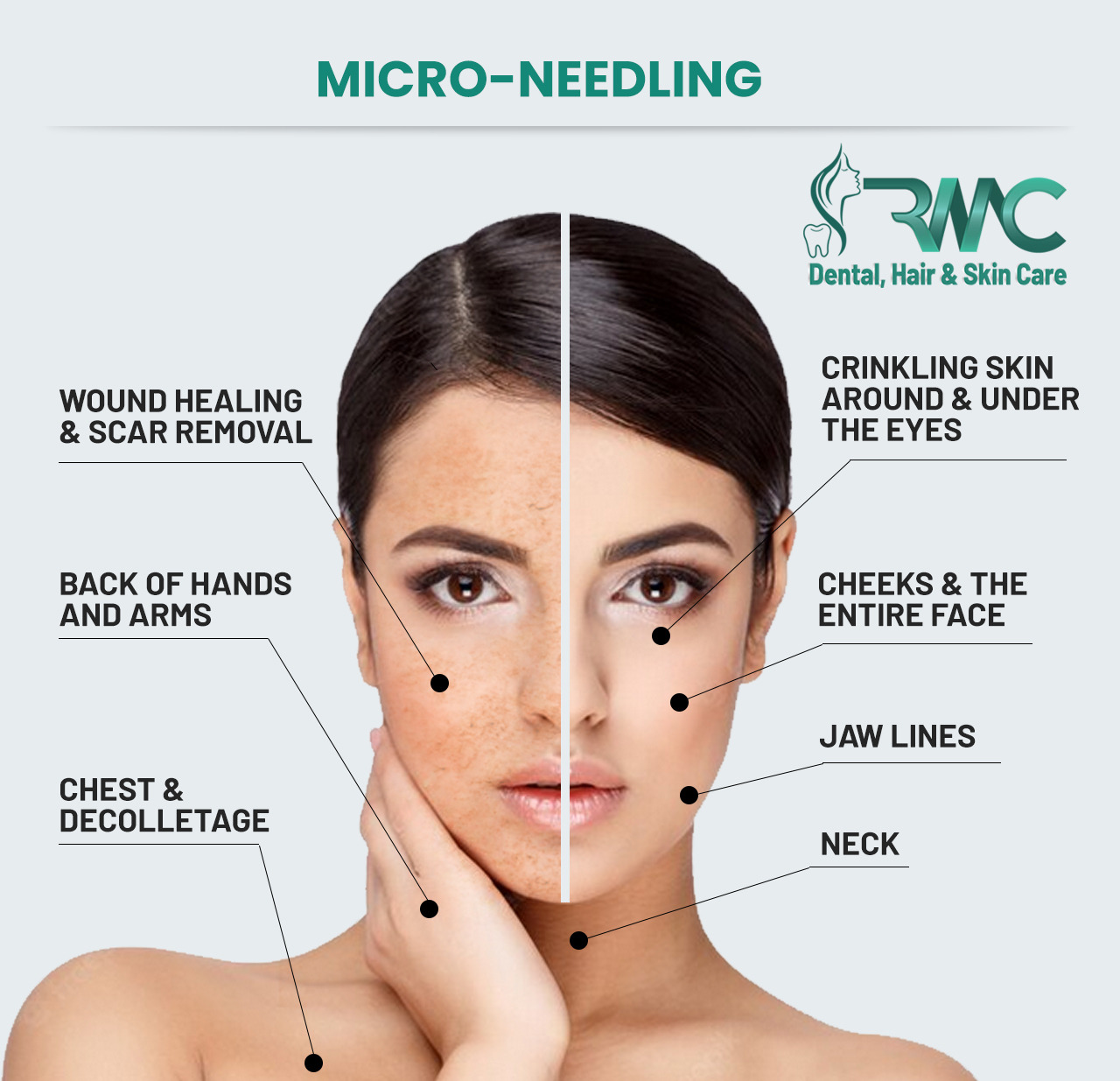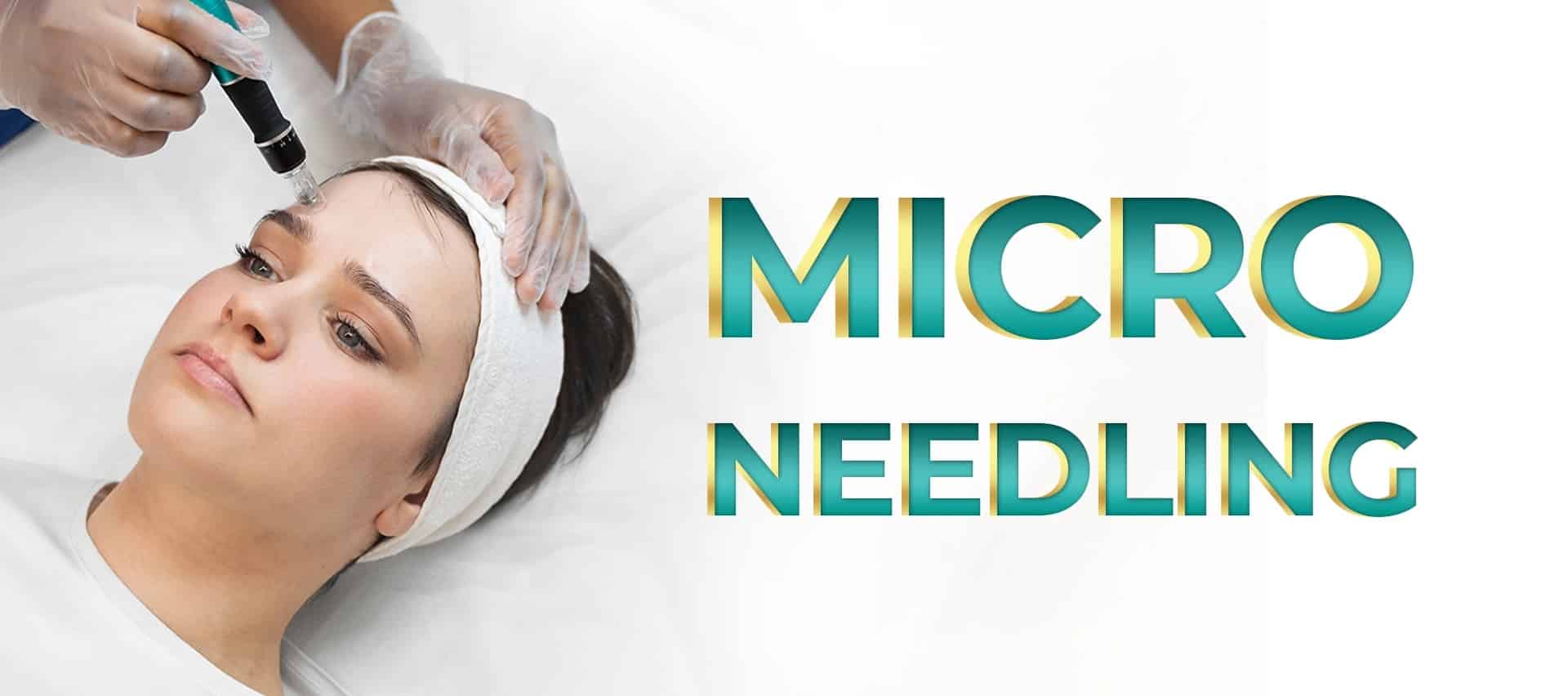What Does Microneedling Do? Get to Know Here

Microneedling is a cosmetic procedure that uses fine needles and pricking into the skin to stimulate collagen production. Collagen production is essential for preventing wrinkles, sagging skin, and loss of elasticity in your face.
Micro-needling is the most effective, safe, and natural way to treat multiple skin conditions. It is a unique technique that has been used to treat many skin conditions. It uses tiny, sterile needles to penetrate the skin’s outer layer, allowing the body to heal naturally.
Do you want to know more about this treatment? So, start reading this blog and get to know everything about it.

What is Microneedling?
Microneedling is a minimally invasive cosmetic procedure that promotes the creation of collagen to cure skin problems. This procedure is also known as collagen induction therapy. It is a procedure that involves the use of tiny needles.
Microneedling is a skin-penetrating procedure that works to reduce fine lines, wrinkles, and scars. Microneedling treatments are relatively inexpensive and require little downtime. However, they cannot be performed without the help of an esthetician or expert dermatologist.
The face is where micro-needling is most commonly performed, but it can also be done on the legs, back, neck, or other areas where you detect aging or damaged skin.
Who Gets Microneedling?
Some dermatologists treat a variety of skin conditions with micro-needling. Numerous skin-related issues, including the following, may be helped by micro-needling:
- Enlarged pores
- Stretch marks
- Scarring
- Fine lines or wrinkles
- Skin pigmentation issues
- Rosacea
- Loose skin
Who is Not a Good Candidate for Microneedling?
These are a few conditions where micro-needling is not advised.
- Scleroderma, collagen vascular diseases, or fungal infection
- Psoriasis and other chronic conditions
- Pregnant or nursing
- Keloid scars
- Immunosuppressed
- History of severe eczema
How Does Microneedling Work?
Your medical professional cleanse your skin before applying a numbing cream or ointment. They do this between 30 and 45 minutes before your treatment.
Your healthcare practitioner uses a hand-held roller or an electric tool to make the wounds in your skin. The roller has very few needles. It is moved slowly and gently across your skin by your healthcare professional.
On the electric device, the needle length can be adjusted. For example, if you have extensive acne scars or pockmarks, longer needles might penetrate your skin more deeply. The size of a needle can vary from 0.5 millimeters to 2 millimeters.
Once the micro-needling procedure has begun, your face may become warm or scratchy. If the needles are placed close to bony structures, such as your cheekbones, some people may experience discomfort. Bleeding could occur after deep micro-needling.
Depending on how large the area that needs treatment is, a micro-needling process can take anywhere from 15 minutes to a few hours.
What Happens After Microneedling?
You can go home after micro-needling because it is an outpatient operation. For up to five days, your skin could be puffy and red. A cold compress can ease discomfort and inflammation. Most people can wear makeup the day after the procedure, but you should avoid direct sunlight for a few days while your skin heals.
What are the Benefits of Microneedling?
Your skin’s look and feel can be enhanced by micro-needling. In addition, stretch marks, scars, wrinkles, and other skin issues can all be reduced by it.
Unlike certain face rejuvenation procedures that employ heat, light, or lasers, it doesn’t pose a danger of skin discoloration. Because of this, micro-needling is perfect for those with darker skin tones.
After just one treatment, micro-needling makes your skin sparkle and keeps improving the look of your complexion for months. There are many advantages of micro-needling. Here are the top ones.
Scar Treatment
Acne and other skin scars can be effectively treated with micro-needling because it stimulates collagen and elastin production.
Anti-aging
Wrinkles and discoloration are only some of the physical signs of aging. Aging skin can appear lifeless and lack a radiant glow. It can be altered by micro-needling.
Fight Stretch Marks
Nearly every part of your body can benefit from micro-needling. It can be effective in reducing stretch marks without any pain or difficulty.
Improve Acne
Microneedling can increase the effectiveness of topical acne treatments due to enhanced topical application distribution. In addition, your skin can become more clear with micro-needling treatment.
Shrink Pores
Microneedling helps to shrink your skin pores. It makes your pores appear considerably smaller. This is because your pores practically disappear when the collagen surrounding them is activated.
No Side Effects
The results of micro-needling are equivalent to those of laser and peel-Off procedures without extensive downtime. After micro-needling, you can have a radiant complexion for 24 to 72 hours.
Side Effects of Microneedling
A study in the journal Dermatologic Surgery in March 2017 found that the first few days of a slight redness or mild irritation indicate that the skin is recovering. The redness should go away in three days. However, in the days following the procedure, you can also experience tight, puffy, dry, or sensitive skin, or it could start to peel off within a week.
Generally speaking, micro-needling is safe and effective, but it’s not recommended for those who receive radiation, have received radiation within the past year, are pregnant, have a skin condition, has a history of scarring, or have slow wound healing.
In addition, those with open wounds or current infections should wait until their skin has healed before attempting it.
Medical skin rejuvenation treatments can be performed by a cosmetic surgeon, dermatologist, or other healthcare professionals who have been specifically trained in the procedure.
What Results Expected From Microneedling?
Results from micro-needling should be seen right away. The body’s wound-healing mechanisms begin to work as the micro-wounds are created within the skin. However, it can take six to eight weeks for the best results to show.
Most of the time, you’ll need more than one session, but because everyone’s needs are different, you should speak with your dermatologist.
How to Prepare for and Recover From the Treatment?
There are a few safety measures to take, but no extra preparation is required. In addition, if you are prone to cold sores, your doctor will want to treat you with an antibiotic to prevent an outbreak. Consult your dermatologist if you are using blood thinners because they can increase bleeding after the treatment.
Although persons with sensitive skin should use moisturizers and serums, their skin will be irritated and more sensitive than usual after the treatment.
Microneedling vs. Home Rollers
Professional micro-needling is performed in a board-certified doctor’s office. However, some people opt for DIY derma rollers rather than expensive ones to save money. In contrast to professional micro-needling, home rollers do not sufficiently puncture the skin layers to draw blood.
Microneedling can be better than a store-bought roller device if you’re looking for longer-lasting and more effective results. However, you can still use the home rollers if you prefer less permanent and intrusive results.
Home rollers, like professional micro-needling tools, might spread germs if they aren’t cleaned properly. On infected skin, do not use a home roller.
A minimally invasive procedure that can enhance the appearance of your skin is micro-needling. If you have stretch marks, acne scars, or other skin issues, talk to your dermatologist about micro-needling.
